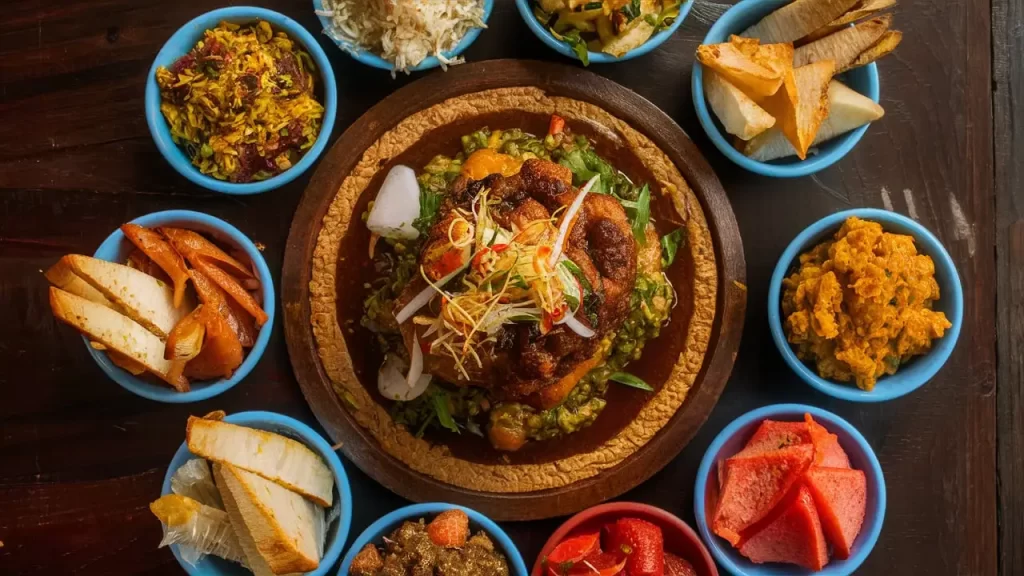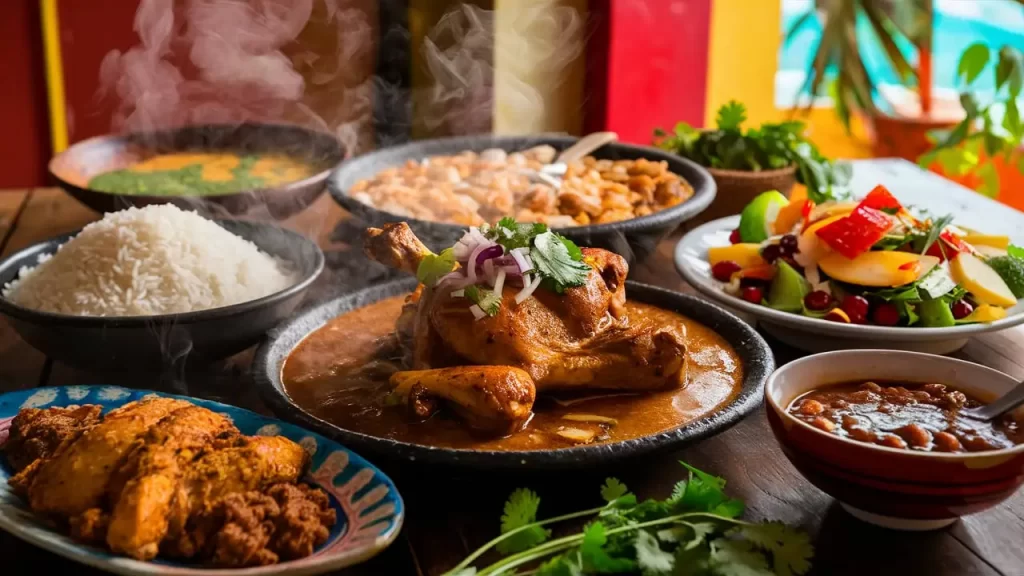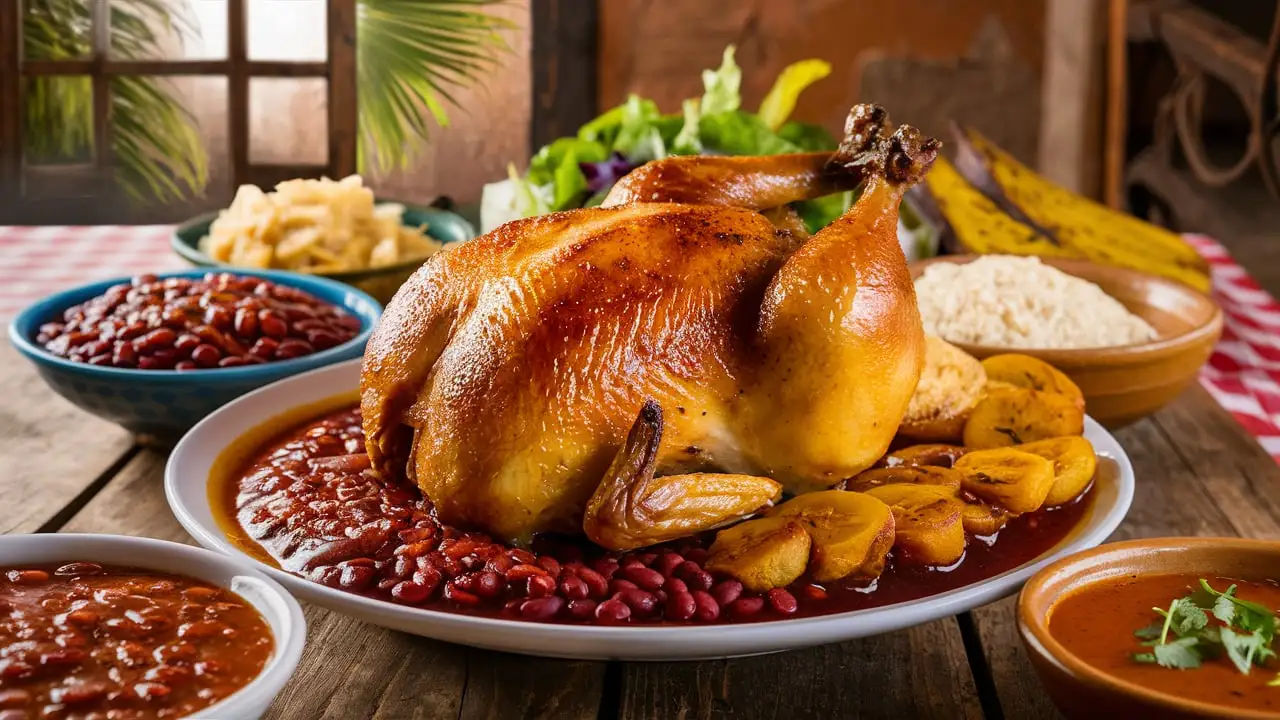Table of Contents
When you think of the Caribbean, the Dominican Republic might be one of the first places that comes to mind. It is well-known for its immaculate beaches, exciting nightlife, and kind residents. But another aspect of the Dominican Republic is just as enchanting: its traditional food. The delectable fusion of Spanish, African, and Taino influences found in traditional Dominican cuisine will entice your palate and leave you wanting more. The most recognizable foods and tastes that characterize Dominican cuisine will be covered in this book.
The Rich Heritage Behind Dominican Republic’s Traditional Food

The Dominican Republic’s traditional food is a melting pot of cultures and flavors, offering a taste of the island’s diverse history. The blend of indigenous Taino ingredients, African techniques, and Spanish influences creates a unique culinary landscape. Every meal, from the simplest street cuisine to the most ornate family feasts, reflects this blend.
Spanish Influence on Dominican Republic Traditional Food
Spanish colonization left an indelible mark on the Dominican Republic’s traditional food. Ingredients such as garlic, oregano, and onions are staples in Dominican cuisine, and cooking methods like stewing and frying are reminiscent of Spanish cooking. This influence may be seen in dishes like the robust stew “Sancocho,” which combines regional ingredients with Spanish cooking methods to produce something distinctive.
African Roots in Dominican Republic Traditional Food
The African influence on the Dominican Republic’s traditional food is profound. Brought to the island through the transatlantic slave trade, African cooking techniques and flavors have been lovingly preserved and adapted. The use of plantains and yams and the method of slow-cooking meats are all African contributions. Dishes like “Mangú,” a mashed plantain dish, are beloved staples that showcase this rich heritage.
Traditional Taino Cuisine in the Dominican Republic
The Taino people, the island’s original occupants, had their own culinary customs before Europeans and Africans arrived. The traditional cuisine of the Dominican Republic is still influenced by these customs. Using ingredients like cassava, corn, and local herbs can be traced back to Taino cooking. A classic flatbread cooked from cassava called “casabe” is a perfect illustration of how these antiquated methods are still used today.
Must-Try Dishes in Dominican Republic Traditional Food

The mouthwatering local cuisine of the Dominican Republic is a mouthwatering representation of the island’s rich cultural past. These dishes are a must-try to give you a sense of the cuisine of the Dominican Republic.
La Bandera Dominicana: A Staple of Dominican Republic Traditional Food
The national dish of the Dominican Republic is called “La Bandera Dominicana,” or “The Dominican Flag.” It’s a simple yet hearty meal consisting of rice, beans, and meat, usually accompanied by a salad or fried plantains. The dish is named for its resemblance to the Dominican flag, with the rice representing the white, the beans the red, and the meat the blue. This dish serves as an excellent introduction to the traditional cuisine of the Dominican Republic and is a mainstay in Dominican families.
Sancocho: Traditional Dominican Republic Food, a Hearty Stew
Another essential component of Dominican Republic traditional cuisine is “sancocho.” This rich, hearty stew is made with various meats, root vegetables, and spices simmered to create a comforting and flavorful dish. It’s typically served around holidays or at get-togethers with family; each home has its own version. This dish serves as an excellent introduction to the traditional cuisine of the Dominican Republic and is a mainstay in Dominican families.
Mangú: A Traditional Dominican Republic Breakfast Favorite
Plantains are boiled and then mashed to make the traditional Dominican morning meal known as “mangu.” Typically, it is served with fried cheese, salami, and eggs, or “Los tres golpes” (the three hits). This dish is a delicious way to start your day and offers a taste of the African roots integral to the Dominican Republic’s traditional food.
Mofongo: A Puerto Rican Reimagining of a Traditional Dominican Republic Dish
“Mofongo” is a dish showcasing the blending of Caribbean cultures. While it’s originally Puerto Rican, it’s also become a beloved part of the Dominican Republic’s traditional food. Mofongo is made from fried plantains mashed with garlic and pork cracklings and shaped into a ball or mound. It is frequently served as an accompaniment to a main course or with a thick soup.
Pastel on: A Special Lasagna in Traditional Dominican Cuisine
“Pastelon” is a dish that could be described as the Dominican version of lasagna. Instead of pasta, layers of sweet plantains, ground meat, cheese, and sometimes vegetables are used. This dish perfectly exemplifies how the Dominican Republic’s traditional food takes familiar concepts and makes them uniquely Dominican.
Street Food: Dominican Republic Traditional Food on the Go
If you’re exploring the Dominican Republic, don’t miss out on the street food. It’s a quick and delicious way to sample the Dominican Republic’s traditional food while you’re on the move.
A Common Street Food in the Dominican Republic is empanadas. Customary Cuisine
In the Dominican Republic, street food empanadas are very popular. These baked or fried pastries might have cheese, vegetables, or even beef and chicken in them. They’re a quick, satisfying snack at nearly any street corner.
Chicharron: A Crispy Treat in Traditional Dominican Cuisine
“Chicharrón” is a street food favorite that showcases the Dominican love for crispy, flavorful bites. This dish consists of fried pork belly or skin seasoned to perfection. It is a delectable, crispy snack that is hard to pass up when sampling traditional cuisine from the Dominican Republic.
Sweet Endings in Dominican Republic Traditional Food
No meal is complete without dessert, and the Dominican Republic’s traditional food has plenty to offer. Dominican desserts are often sweet, rich, and deeply satisfying.
Also read: Yemen Food: Discover the Rich Flavors That Will Steal Your Heart
Dulce de Leche: A Creamy Treat in Dominican Republic Traditional Food
A common dish prepared from thickened, caramelized condensed milk that has been sweetened is called dulce de leche. It’s frequently eaten on its own or as a filling for cakes and pastries. The creamy, rich flavor is a perfect way to end a meal.
Habichuelas con Dulce: A Sweet Bean Dish in Dominican Republic Traditional Food
“Habichuelas con Dulce” might sound unusual, but this sweet bean dessert is a beloved part of the Dominican Republic’s traditional food. This creamy, sweet meal is made with red beans, coconut milk, sugar, and spices. It is available all year round but is especially popular at Easter.
The traditional cuisine of the Dominican Republic honors the history and rich cultural legacy of the island. Every dish, from the rich “Sancocho” to the delightful “Dulce de Leche,” has a backstory. The flavors of the Dominican Republic are sure to make an impression, whether you’re dining in a neighborhood restaurant or trying street food. Your taste buds will thank you for exploring the delectable world of Dominican Republic traditional cuisine the next time you’re in the Caribbean!

